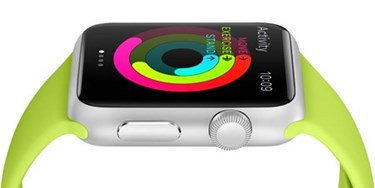Wearables: The Promise And Peril For Medtech Companies
By Brian Williams, PwC

From smart clothing to wristwatches, activity trackers to ingestibles, and patches to smart implants, wearables that extract biological data are pouring into the digital health domain. Major consumer electronics companies — such as Apple, Samsung, Microsoft, and Google — are joining established and emerging medical device companies in launching these wearable technologies.
By attacking the health and wellness market, these new entrants are organizing and integrating basic vital signs and consumer-generated health data into patient-specific and cohort data sets, enabling new holistic and contextual views of health and healthcare. Traditional medical device companies’ success will be measured by how well they help to prove outcome value, and by how seamlessly they can integrate into patients’ daily, wired lives.
We know consumer interest in wearable health technologies is high: according to PwC’s Consumer Intelligence Series — The Wearable Future report — 70 percent of consumers surveyed last year by PwC told us they would use an employer-supplied, wearable fitness tracker in return for a discount on their companies’ health insurance. But consumer adoption may be hindered in part by a series of broad questions whose answers require device and diagnostics manufacturers, payers, providers, and consumers to share a view of health and adopt new economic models.
These are questions about how to apportion value to devices, raw data, analytics, and behavioral change in support of truly improved health outcomes and lower costs. Among them:
- What is the value of consumer-generated biological data, and to whom and when?
- What are the relevant data points and insights that impact consumer health and should cause a change in behavior?
- What is the value of modified consumer behavior that improves health, and who captures that value?
Consumers expect wearable health technologies to be engaging, intelligent, and integrated into their daily activities, just as mobile technologies have helped transform how we socialize, shop, and bank. Most importantly, these devices’ wearers use the captured data to understand differences and translate those differences into knowledge and actions that improve health.
Historically, only trained physicians and nurses, with their years of training and rounds of appointments, had the ability to apply perpetual learning in healthcare. Wearable health solutions, and the learning they provide, collapse the information asymmetry that has existed between the health practitioner and the consumer.
For clinicians, wearable health technologies provide contextual data that can inform and guide interventions, triage access into an overburdened healthcare system, expand how and when consumers and care teams engage, improve outcomes, and lower costs. Integrated care-delivery models will use wearable health technology to augment human talent, increasing the sophistication and capabilities at each step of the care ladder: from care coordinator up through nurse aid, nurse practitioner, nurse, and physician.
Wearable health technology will also enable local and remote care teams to guide and nudge consumers toward compliance and healthier outcomes. Advocates suggest that apps (such as WellDoc, Kinsa, MoleScope, etc.) and integrated, intelligent solutions (such as Dario, Cellscope, Theranos, etc.) can extend and transform human health.
For medical device and diagnostics manufacturers, wearable health solutions represent both promise and peril. The promise of integrated solutions across the care continuum is that they can support outcomes or value-based reimbursement models. The peril is that devices and diagnostics manufacturers become no more than component suppliers to integrated health solutions controlled by leading consumer technology companies.
The Promise
Medtech has traditionally competed only at or during the episode of care. In some cases, value has been defined by physician preference, not quantifiable differences in patient results. Wearable health devices can support new business models for device and diagnostics companies supporting the care continuum.
Example: Today, implant manufacturers compete for a knee replacement at the physician, the practice group, and the surgical suite. In the new health economy, an implant manufacturer could partner with a wearable health device to capture contextual consumer data. A clinical-grade, disposable wearable could provide the pre-operative baseline for activity, range of motion, etc. needed to support an outcomes-based reimbursement.
Both in-person rehabilitation and remote rehabilitation using a motion capture device, as well as an implant-embedded sensor that captures load, steps, etc., would further define outcomes. A post-operative, disposable wearable could provide the definitive metric of success. Each data element could be transmitted through a consumer’s preferred mobile device to a health app that integrates consumer generated, contextual biometric data, plus device- and procedure-specific baseline and performance metrics.
Consequently, an implant manufacturer would have contextual and procedure data to support an outcomes-based reimbursement model, including an economic model that could be based on a consumer’s steps, rather than on the purchase of a device.
The Peril
As consumers select mobile devices, apps, and peripherals, the scale and economic vitality of these electronic ecosystems expands. Consumers expect health-related solutions to integrate fully into this ecosystem. Device and diagnostics manufacturers run a significant risk if they believe that health solutions can remain independent of these electronic eco-systems.
Technology companies are aggressively attacking the health-and-wellness market to capture consumers and are aggressively moving into the clinical setting, tightening the hold of devices and operating systems. And remember, clinicians are consumers too.
Example: The prevalence of diabetes is a global health challenge, with payers and practitioners actively seeking new care models to mitigate the disease’s health, financial, and social impacts. Several promising, early-stage companies are demonstrating that apps and other smartphone-integrated solutions can mitigate the need for traditional elements of diabetes management (insulin, lancets, test strips, etc.), lowering health system costs and improving patient outcomes.
Conclusions
To succeed in the new health economy, device and diagnostics manufacturers need to re-balance their innovation efforts, dedicating as much money and time to business model innovation as product innovation. In addition, device and diagnostics manufacturers need to devise care continuum solutions that are integrated, intelligent, interoperable, and outcomes-oriented.
Partnerships are critical in the “New Health Economy.” Data ownership will not be as important as data format, structure, and transmission protocols capable of serving the appropriate data elements to the right parties at the right times. As more complex or multi-component form factors emerge (e.g., a watch or sensor-embedded shirt), the partnership model for device and diagnostics manufacturers will need to evolve. The winners in the new health economy will be those with robust partnerships, sound governance models, sustained innovation efforts, and a vision to engage across the care continuum.
 About The Author
About The Author
As a member of PwC's New Entrant’s practice, Brian Williams advises senior executives of traditional medical device and diagnostics companies on the “New Health Economy” and senior executives at non-traditional healthcare companies seeking to enter and transform access to and adherence to care. He has nearly twenty years of investment, business development, and strategy expertise within health care.
© 2015 PricewaterhouseCoopers LLP, a Delaware limited liability partnership. All rights reserved. PwC refers to the U.S. member firm, and may sometimes refer to the PwC network. Each member firm is a separate legal entity. Please see www.pwc.com/structure for further details.
